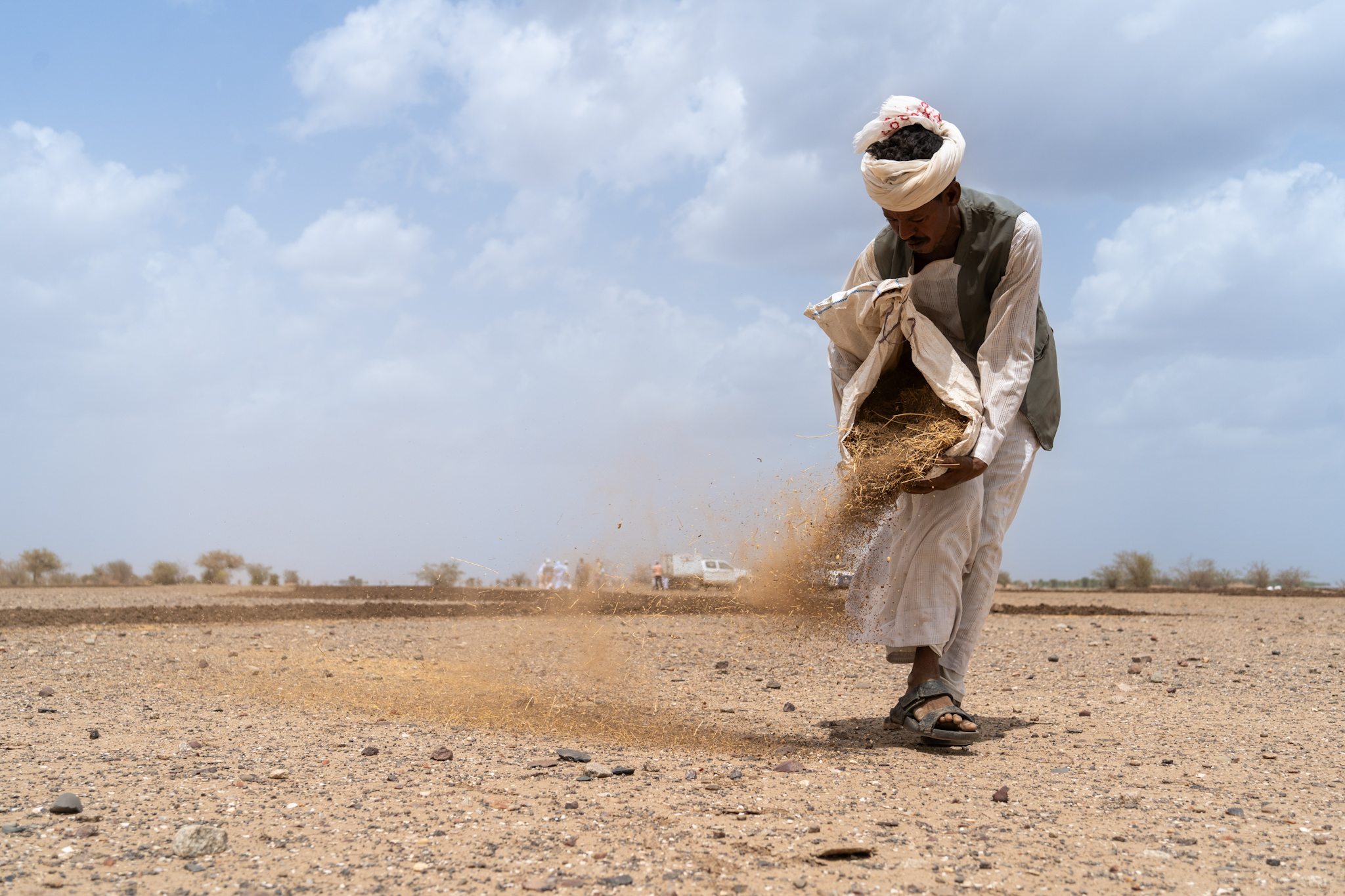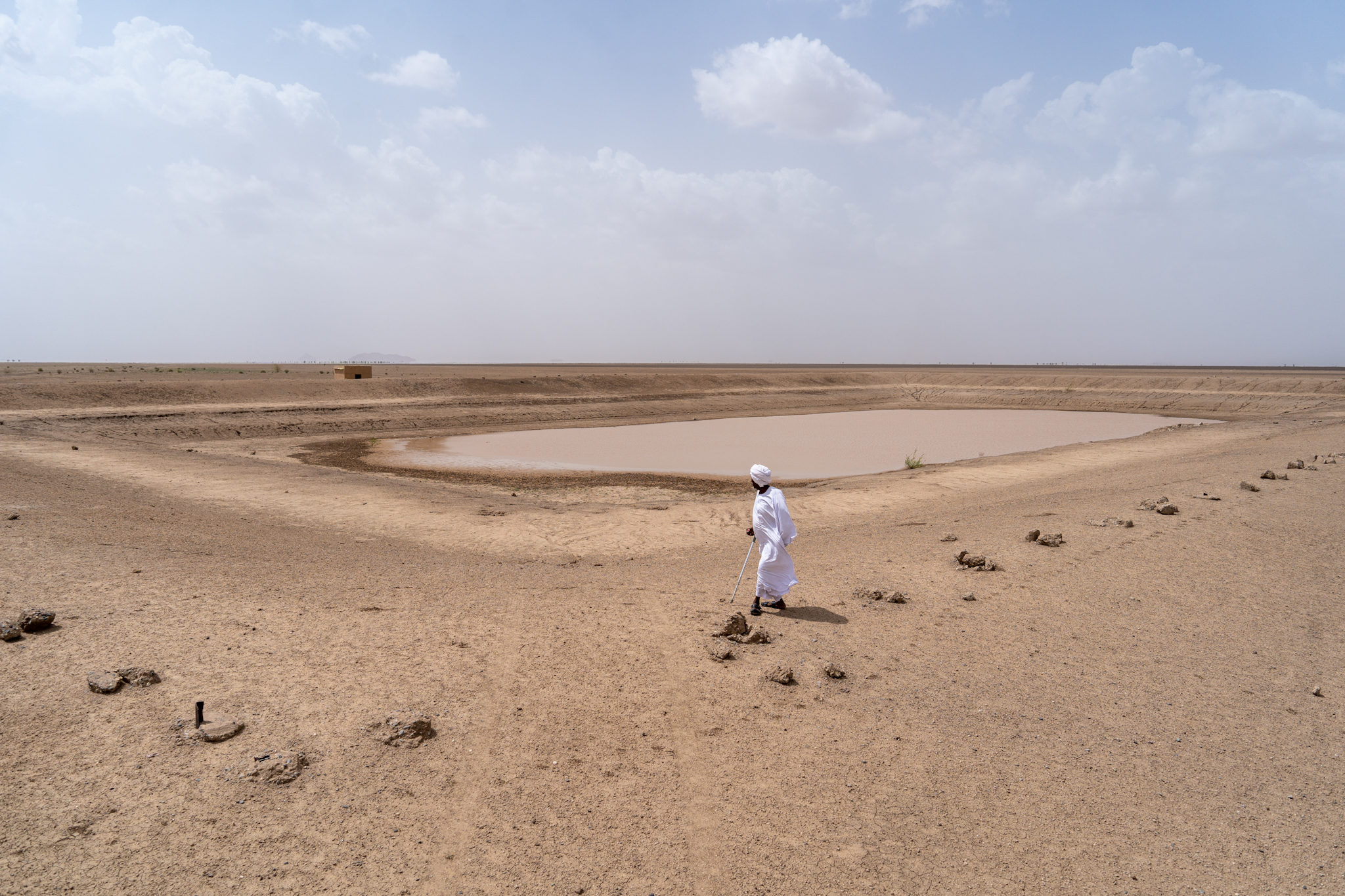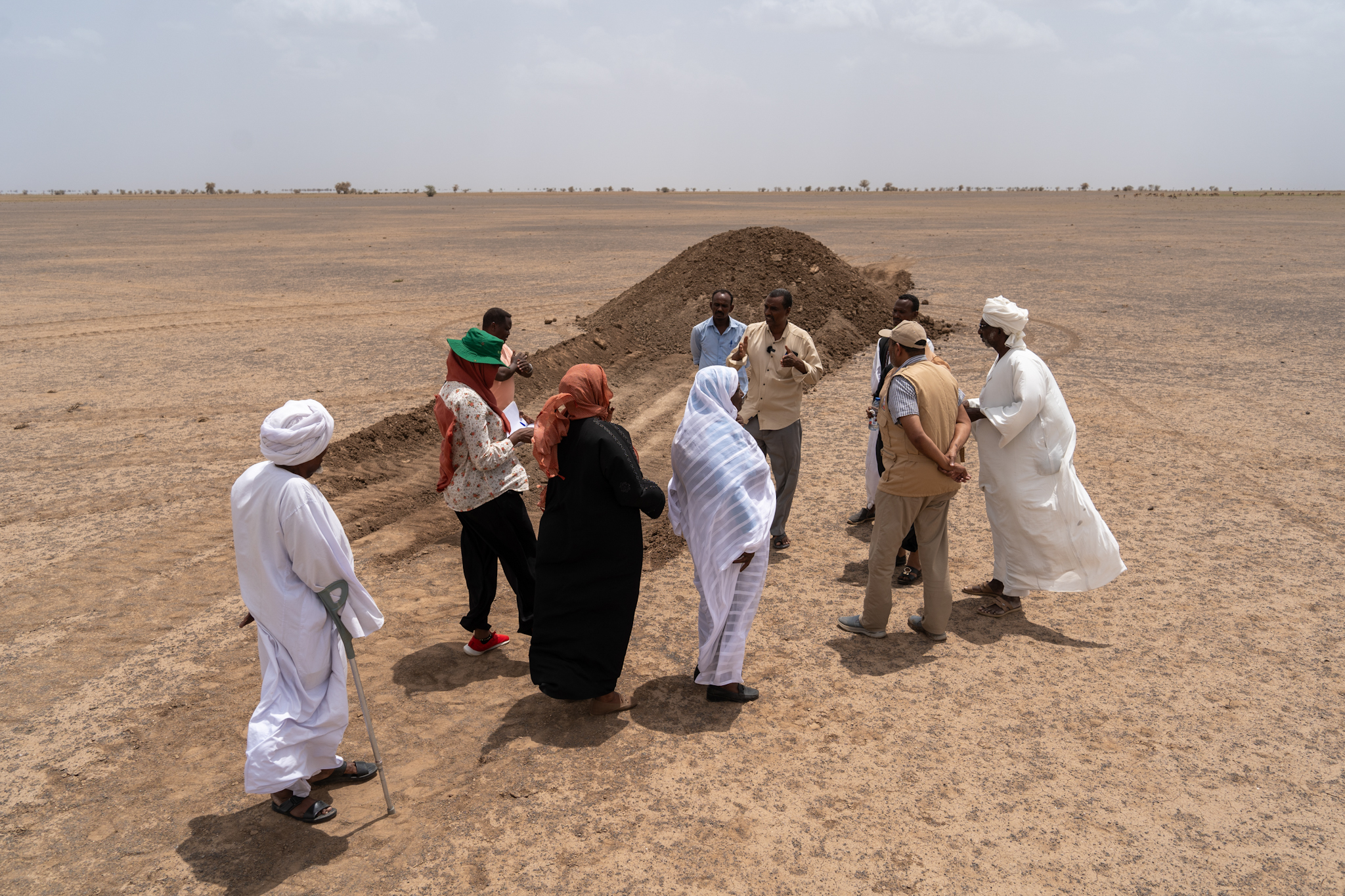In parts of the conflict-ridden Sudan, including the eastern regions such as Kassala and Gadarif, rainfall is sparse and recurring droughts caused by climate change compound the issue. Consequently, perennial grasses that are supposed to grow back year after year are dramatically disappearing.
In addition, uncontrolled and heavy grazing in large areas in Sudan is also negatively affecting soil by increasing erosion, and cattle hooves can compact the soil, preventing plant roots from receiving enough oxygen, water, and nutrients.
Due to these factors, many pastoralist groups in east Sudan are seeking grazing resources outside their recognized tribal territory. A major problem for these groups has been the recurrent droughts and the deterioration of pasture areas, which has forced them to stay longer in areas with rich grazing, thus competing with other groups and leading to frictions and conflicts.
Livestock-Food Systems Development (LFSD) is a component of the Sustainable Agrifood Systems Approach for Sudan (SASAS), funded by USAID, focused on the dairy and meat subsector of the livestock sector. The LFSD aims to enhance the utilization of appropriate forage and feeding options through the demarcation of migratory routes to ease access to grazing, avoid conflicts, and reduce long-distance livestock travel impact on livestock health.
Along with partners, Practical Action and International Livestock Research Institute (ILRI), LFSD, is establishing a 50 km migratory route demarcation from Al Hindiiyya to Banqir in the Atbara River locality, Kassala State, East Sudan. These routes connect villages to public grazing land for livestock to pass through without impacting farmland.
The intervention also includes reseeding 1,000 feddans (around 420 hectares) of grazing lands and creating water ponds for animals during the rainy season. SASAS is also enhancing water harvesting by using a tractor to increase soil moisture. The two interventions were recommended by local communities and agriculture and animal resources authorities in Kassala state.
“As the rainy season is commencing, we started working with the local communities and reseeding the targeted areas in rural Kassala and River Atbara localities as recommended by the Ministry of Agriculture,” said Dr. Abdallah Osman, Project Manager, Practical Action.

“To ensure the best results, we used a mix of five high-quality seed types, all of which were recommended by the Kassala State Ministry of Agriculture,” Osman said.
The reseeding will serve 15 villages and enhance grazing lands for over 100,000 animals in the area. In addition, water storing capacity will be increased by constructing 15 large water ponds.
“For the past decades, our grazing lands had diminished gradually, and we face huge challenges in feeding our livestock, especially during dry seasons. In most cases, we had to buy costly fodder and water trucking,” said Ahmed Hassan, a community leader and a herder from River Atbara Locality, Kassala State. “We feel very proud to participate in reseeding the grazing lands in our areas, as this will increase grass yield and quality, enabling us to feed our animals better.”
The intervention also aims to rehabilitate animal migratory route demarcations to ease access to grazing, avoid conflicts, and reduce long-distance livestock travel impact on livestock health.
“As farmers, we suffer a lot from animals that cross into our agricultural fields and destroy our crops. We are relieved that reseeding will create more grazing lands for herders, and the demarcation of animal routes will help reduce the chronic seasonal conflicts between farmers and herders,” said Haw Osman, a farmer from Am Safri, Kassala Rural locality.
“At SASAS, we strive to ensure that herders have access to rich grazing lands. We work with our partners to address all problems linked to overgrazing, reseeding pasture lands, and treating the causes of conflict between herders and farmers. We involve local communities in creating clear animal migration routes away from farms and increasing water sources for animals through water harvesting projects,” said Abdelrahman Kheir, SASAS Chief of Party in Sudan.



 Environmental health and biodiversity
Environmental health and biodiversity 
